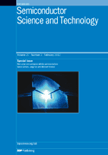
SEMICONDUCTOR SCIENCE AND TECHNOLOGY
Scope & Guideline
Exploring the forefront of materials science and engineering.
Introduction
Aims and Scopes
- Advanced Semiconductor Materials:
Research on the synthesis, characterization, and properties of novel semiconductor materials including wide bandgap semiconductors like GaN and β-Ga2O3, which are pivotal for high-power and high-frequency applications. - Device Physics and Engineering:
In-depth exploration of the physical principles governing semiconductor devices such as HEMTs, MOSFETs, and photodetectors, focusing on improving performance metrics and reliability. - Nanotechnology and Nanoscale Devices:
Investigations into nanoscale phenomena and the development of nanostructured devices, including quantum dots, nanowires, and two-dimensional materials, which are crucial for next-generation electronic and optoelectronic applications. - Photovoltaics and Energy Harvesting:
Studies aimed at enhancing the efficiency and stability of solar cells, particularly those utilizing novel materials and architectures, contributing to the field of renewable energy. - Characterization Techniques:
Development and application of advanced characterization techniques such as spectroscopic methods, microscopy, and electrical measurements to analyze semiconductor materials and devices. - Emerging Applications and Technologies:
Research on the application of semiconductor technologies in fields such as neuromorphic computing, biosensing, and flexible electronics, highlighting innovative uses of semiconductor materials.
Trending and Emerging
- Wide Bandgap Semiconductors:
Research on wide bandgap materials such as GaN and β-Ga2O3 is on the rise, driven by their suitability for high-power, high-frequency, and high-temperature applications, making them critical for modern power electronics. - 2D Materials and Heterostructures:
The exploration of two-dimensional materials like graphene and transition metal dichalcogenides (TMDs) is gaining momentum, particularly for their unique electrical and optical properties that enable novel device architectures. - Integration of Semiconductor Technologies with AI and Machine Learning:
The intersection of semiconductor devices with artificial intelligence and machine learning techniques is emerging, focusing on improving device performance and enabling smart functionalities. - Flexible and Wearable Electronics:
Increased research is being directed towards flexible and stretchable electronics, driven by the demand for wearable devices, which require novel materials and device designs. - Advanced Characterization Techniques:
There is a growing emphasis on the development of sophisticated characterization techniques that provide deeper insights into material properties and device behavior, enabling better understanding and optimization. - Energy-Efficient Devices and Sustainability:
Research aimed at improving the energy efficiency of devices and developing sustainable semiconductor technologies is trending, reflecting a broader societal focus on environmental impact.
Declining or Waning
- Traditional Silicon Technologies:
There is a noticeable decline in papers focusing solely on conventional silicon-based technologies as researchers shift towards exploring wide bandgap semiconductors and novel materials to meet the demands of high-performance applications. - Legacy Device Technologies:
The focus on older device architectures such as bipolar junction transistors (BJTs) and conventional MOSFETs has decreased as the field moves towards more innovative and efficient technologies like FinFETs and negative capacitance transistors. - Low-Temperature Processing Techniques:
Research on low-temperature processing methods for semiconductor fabrication has become less prevalent, possibly due to the growing emphasis on high-temperature and high-quality growth techniques that enhance material properties. - Basic Theoretical Studies:
There has been a reduction in purely theoretical studies without experimental validation, as the community increasingly favors research that combines theoretical insights with practical applications.
Similar Journals
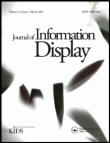
Journal of Information Display
Illuminating the future of display systems.Journal of Information Display is a leading academic journal published by TAYLOR & FRANCIS LTD, dedicated to advancing the field of display technology, which encompasses innovative research on materials and applications in electrical engineering. With its ISSN 1598-0316 and E-ISSN 2158-1606, this esteemed journal has been an open access resource since 2017, enabling widespread dissemination of knowledge and fostering a collaborative environment for researchers worldwide. Recognized for its impact, the journal is classified in the Q1 quartile in both Electrical and Electronic Engineering and Materials Science in 2023, showcasing its significant influence and relevance in these fields. Notably, it ranks highly in Scopus, with a ranking of #166 in Electrical and Electronic Engineering and #115 in General Materials Science, placing it within the top 20% of its category. The Journal of Information Display covers a broad scope from 2000 to 2024, making it a vital resource for professionals, academics, and students who seek cutting-edge research and developments in display technologies.
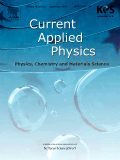
CURRENT APPLIED PHYSICS
Unveiling the Latest in Physics and Material Innovations.Current Applied Physics is a leading journal published by Elsevier, specializing in the dynamic fields of Physics and Materials Science. With an ISSN of 1567-1739 and an E-ISSN of 1878-1675, this journal focuses on the latest advancements and applications of physics principles in various practical domains. Operating from the innovative hub of Amsterdam, Netherlands, Current Applied Physics occupies a significant niche in the scientific community, evidenced by its Q2 ranking in both the Physics and Astronomy and Materials Science categories for the year 2023, along with impressive Scopus rankings that highlight its relevance in the fields of General Physics and General Materials Science. The journal's scope encompasses a wide range of topics, fostering interdisciplinary collaboration and facilitating the exchange of knowledge among researchers, professionals, and students. Each issue features peer-reviewed articles that contribute to the understanding and application of physical sciences, making it an essential resource for those aiming to stay at the forefront of research and innovation in applied physics.

Journal of Computational Electronics
Exploring New Dimensions in Atomic and Molecular PhysicsJournal of Computational Electronics, published by Springer, is a leading international journal that caters to the interdisciplinary field of computational modeling and simulation, particularly within atomic and molecular physics, electrical and electronic engineering, and electronic materials. Since its inception in 2002, the journal has established itself as an essential resource for researchers, professionals, and students, providing a platform for disseminating innovative research and advancing methodologies related to electronic systems. With its current Q3 ranking across multiple categories—including Atomic and Molecular Physics, Engineering, and Materials Science—the journal plays a significant role in shaping the future of computational approaches in relevant fields. While it is not an open access journal, its rigorous peer-review process ensures high-quality content, reflecting the latest advancements and insights. The Journal of Computational Electronics continues to contribute to scholarly discourse, supporting the development of cutting-edge technologies and theoretical frameworks essential for the evolving landscape of electronics.
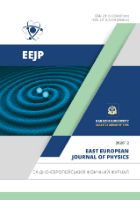
East European Journal of Physics
Fostering collaboration through open-access scholarship.The East European Journal of Physics, published by the V N Karazin Kharkiv National University, is a dynamic open-access journal dedicated to advancing research in the fields of Physics and Materials Science. Since its inception in 2014, the journal has become a platform for scientists and academicians throughout Eastern Europe and beyond, fostering collaboration and dissemination of innovative studies and findings. With its ISSN 2312-4334 and E-ISSN 2312-4539, it attracts a global readership and submissions that are rigorously peer-reviewed to ensure the highest scholarly standards. Despite currently holding a Q4 category ranking in both Materials Science and Physics and Astronomy, as well as modest Scopus rankings, the journal is positioned to play a crucial role in elevating the visibility and impact of research emanating from this geographically and scientifically significant region through an open access model. This commitment to open scholarship is critical for fostering academic exchange and impact, making the East European Journal of Physics a valuable resource for researchers, professionals, and students seeking insight into the latest developments within these fields. Join us in exploring the frontiers of knowledge and innovation from Ukraine and its surrounding areas.
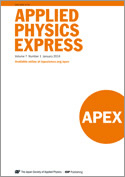
Applied Physics Express
Shaping the Future of Applied Physics TogetherApplied Physics Express, published by IOP Publishing Ltd, is a leading journal that focuses on the rapid dissemination of research in applied physics, aimed at both academia and industry professionals. Operating from Japan, this prestigious journal features a broad scope within the domains of engineering and physics and astronomy, earning a significant place in the research community, as evidenced by its Q2 ranking in both disciplines for 2023. With a commitment to excellence, Applied Physics Express provides a platform for authors to share their innovative findings, promoting collaboration and advancement in the field. Its impact is further highlighted by its solid performance in Scopus rankings, featuring prominently within the engineering and physics categories. Although the journal does not currently operate under an open access model, it is dedicated to ensuring that high-quality research is accessible to its readers. Researchers, students, and professionals can find invaluable insights and cutting-edge studies within its pages, making it an essential resource for those engaged in applied physics and its interdisciplinary applications.

Applied Science and Convergence Technology
Transforming Ideas into Impactful SolutionsApplied Science and Convergence Technology (ISSN: 2288-6559) is a premier academic journal published by the Korean Vacuum Society, dedicated to advancing knowledge in the intersecting fields of condensed matter physics, electrical and electronic engineering, materials science, and theoretical chemistry. Based in South Korea, this journal serves as an essential platform for researchers, professionals, and students seeking to explore innovative applications and methodologies that drive convergence in science and technology. With a convergence period spanning from 2019 to 2024, the journal aims to publish high-quality original research and review articles that foster collaboration and knowledge sharing across disciplines. Its current quartiles position in top categories, alongside a respectable rank in Scopus, highlights its significance within the scientific community, although it is presently classified within lower tiers. The journal's commitment to open access ensures that vital research findings are accessible to a global audience, facilitating advancements in science and technology. As a notable outlet in its field, Applied Science and Convergence Technology continues to attract contributions that not only challenge current paradigms but also pave the way for future innovations.
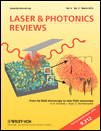
Laser & Photonics Reviews
Unveiling Breakthroughs in Condensed Matter PhysicsLaser & Photonics Reviews is a prestigious academic journal published by WILEY-V C H VERLAG GMBH, based in Germany. Since its inception in 2007, the journal has rapidly established itself as a leading outlet in the fields of Atomic and Molecular Physics, Condensed Matter Physics, and Electronic, Optical, and Magnetic Materials. With its impressive impact factor and presence in the Q1 category across multiple relevant disciplines, it ranks among the top-tier journals in its field—ranked #18 out of 434 in Condensed Matter Physics and #13 out of 224 in Atomic and Molecular Physics according to Scopus rankings. The journal emphasizes high-quality research that contributes significantly to theoretical and applied photonics, bridging gaps between fundamental science and practical applications. Although access is not open, it remains essential reading for researchers, professionals, and students eager to stay abreast of groundbreaking advances and applications in laser technology and photonics. For further information and to explore its compelling articles, please visit its official site.

Electronic Materials Letters
Advancing the Future of Electronic MaterialsElectronic Materials Letters is a distinguished journal dedicated to the dissemination of research in the field of electronic, optical, and magnetic materials. Published by the Korean Institute of Metals and Materials, this journal has established itself as a critical platform for scholars and practitioners since its inception in 2008, with coverage extending through 2024. With an ISSN of 1738-8090 and an E-ISSN of 2093-6788, it has achieved a commendable Q3 categorization for 2023, ranking 107 out of 284 in the Scopus database's specialized field, reflecting its relevance with a 62nd percentile position among its peers. Although this journal operates under a traditional access model, its rigorous peer-review process ensures that only the most impactful research reaches its audience, thereby maintaining high scholarly standards. Positioned in South Korea at the heart of technological innovation, Electronic Materials Letters plays a vital role in bridging the gap between theoretical investigations and practical applications, making it an essential resource for researchers, industry professionals, and students aiming to thrive in the rapidly evolving materials science landscape.

MICROELECTRONIC ENGINEERING
Connecting Knowledge with Innovation in the World of MicroelectronicsMICROELECTRONIC ENGINEERING is an esteemed journal published by Elsevier, focusing on the rapidly evolving fields of microelectronics and nanotechnology. It encompasses a wide array of topics, including atomic and molecular physics, condensed matter physics, and the engineering aspects of electronic, optical, and magnetic materials. With its impressive impact factor and recognition as a Q2 journal in several categories, it provides an invaluable platform for researchers and professionals to disseminate their groundbreaking findings. The journal has been instrumental in advancing our understanding and application of microelectronic technologies since its inception in 1983. Currently ranked highly within various specialized categories in Scopus, MICROELECTRONIC ENGINEERING offers targeted access to cutting-edge research, fostering innovation and collaboration in the world of electronic engineering and materials science. As we look towards the future, with convergence continuing to shape research until 2024, the journal remains a critical resource for those dedicated to pushing the boundaries of knowledge in these dynamic fields.

PHYSICA STATUS SOLIDI A-APPLICATIONS AND MATERIALS SCIENCE
Elevating the discourse in materials applications.PHYSICA STATUS SOLIDI A-APPLICATIONS AND MATERIALS SCIENCE, published by WILEY-V C H VERLAG GMBH, stands as a prominent journal in the fields of condensed matter physics, materials science, and engineering. With an ISSN of 1862-6300 and E-ISSN 1862-6319, this journal has been actively contributing to scientific discourse since its inception. The journal currently holds a respectable Q2 ranking across several categories including Electrical and Electronic Engineering and Materials Chemistry, demonstrating its significance in advancing research and development within these domains. Although it does not offer open access, the journal ensures high-quality peer-reviewed content that is critical for researchers and professionals aiming to stay at the forefront of materials science innovations. The journal’s convergence years, extending from 2005 to 2024, reflects its ongoing commitment to publishing impactful research. By facilitating discussions on applications and advances in materials science, PHYSICA STATUS SOLIDI A continues to be an essential resource for those striving to contribute to this dynamic field.